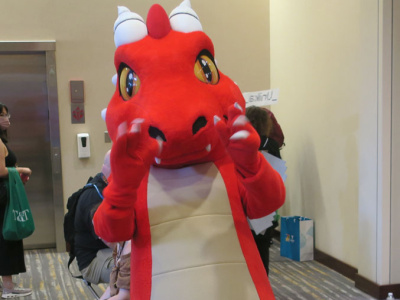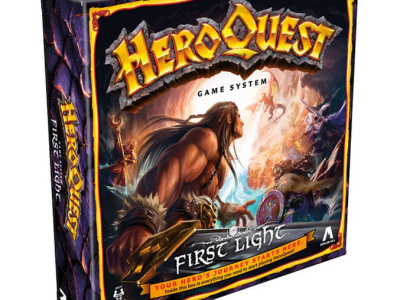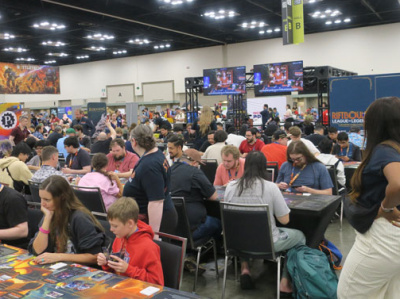 Get In The Game is a weekly column by Dan Yarrington, managing partner of Myriad Games in Manchester & Salem, New Hampshire, Treasurer of the Professional Game Store Association, and Editor-in-Chief of GameSalute.com. This week, Yarrington offers an open letter on making games sell.
Get In The Game is a weekly column by Dan Yarrington, managing partner of Myriad Games in Manchester & Salem, New Hampshire, Treasurer of the Professional Game Store Association, and Editor-in-Chief of GameSalute.com. This week, Yarrington offers an open letter on making games sell.Welcome back to Get In The Game, a column that explores proactive ways we can improve the games industry. This week, we unpack some of the elements that make games sell.
Style + Substance: Undereasy
There are so many solid games out there that did not have the proper care given to making them great sellers. Most just end up 'meh' and that’s a shame. There are simple guidelines to follow and most publishers do not heed them, resulting in a raft of underwhelming releases with a few gems sprinkled in between. This is an open letter to all publishers to make a change, and a call to stores to fully stock and support titles that have the right attributes to be not only good games but great sellers.
People Like Playing
The more expansive the number of players a game allows for, the more likely the game is to get played. I can play by myself? Cool. I can play with my wife? Awesome. I can play with my four friends that came over tonight? Yes! I can have all those options in one game? Even better. Scaling players is one of the biggest challenges in game design and doing it properly can have one of the biggest payoffs. Naturally certain games will play best with certain player counts. That's fine and not every game needs to support 1-8 players, but every designer should be carefully considering and assessing player count and support, rather than just focusing on what their play test playgroup prefers.
Time and Time Again
Game sessions need to be more modular and incremental. You should be able to play for a bit or play for a while, and ideally carry the game experience over from one sitting to another. The more approachable a play time, the more potential players and customers. In general: shorter play times, please.
Theme Matters -- A Lot!
The title of a game should make you go "that sounds interesting..." rather than "that doesn't sound too bad..." I mean c'mon -- take any average game on your shelf right now and tell me that a good wordsmith couldn't have made the entire concept more interesting and instantly appealing. How many games do we need about Renaissance economics and culture? How many games are there about poisonous pollywogs or lighthearted leprechauns? Not enough blackberry-banana and too much vanilla.
Enough With The Serious Already
I've never understood the aversion to having fun with games. We dress games up in the most serious or mundane trappings possible, rather than fully embracing how fun you can make the theme of a game. Even a game about everyday activities can be made more fun. Look at Vlaada Chvatil games for examples of how he imbues the rules and the experience with fun. We need less serious and more silly. Less fussy and more fun.
The Price Isn't Right
There are so many games that are produced at prices that don't sync up with the value of the game experience or the expectations of the marketplace. A game's cost should be a factor of its quality, playability, re-playability, and overall appeal. Publishers need to make hard choices and decide not to make games that are overpriced. Better to look at ways to make those games in formats that match their perceived value (or increase that value), than to print overpriced titles that will only sell on clearance when the market adjusts for their true market price. A wise man once said, "The price is wrong, Bob!" and in this example, Bob represents the vast majority of publishers.
It's All About The Fun
Every aspect of how a game is designed, developed, presented, marketed, sold, and supported should add to the fun of the experience. If the very way we're creating, selling, and sharing games is itself a part of the fun, we have potent tools to attract new gamers.
Make Fewer, Better Games
We need more companies that put out a reasonable number of quality titles on a regular schedule, and fewer companies that rush out titles just for the sake of cash flow. It's inexcusable, especially when applying basic principles of attribute alignment can make almost any title more marketable and saleable. There are more ideas, opportunities, and options out there than ever before. We need more appreciation of awesome games and more time and energy spent on making games truly great. Games should serve as contagious vectors of entertaining shared experiences. Stop putting out 10 boxes of cardboard and plastic where 7 are 'meh' 2 are ok and 1 is good. Give me 2 boxes where 1 is awesome and the other one's great. You'll sell more, your design and development costs will decrease, and your brand value will increase significantly.
Talk Back!
What games are truly great and which ones should never have been printed? What can publishers do to improve how their games are created, sold, and shared? Talk Back today!
What are you waiting for? Get In The Game!
The opinions expressed in this column are solely those of the writer, and do not necessarily reflect the views of the editorial staff of ICv2.com.







